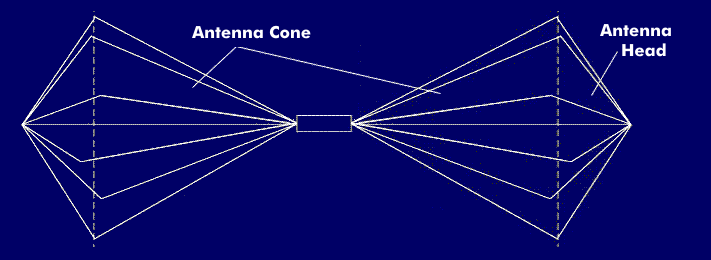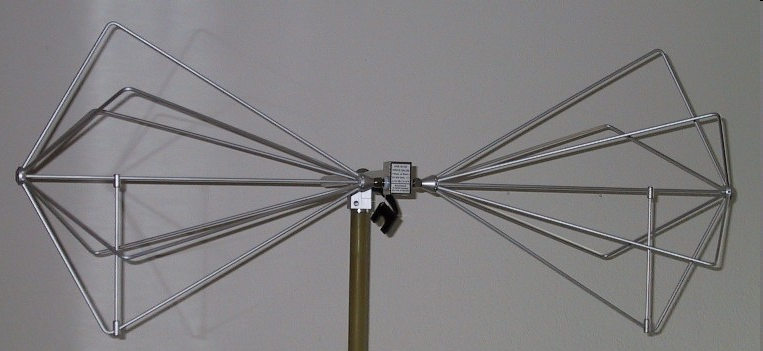biconical antenna
Antennas with conically arranged antenna elements were already developed and used in the early years of radio technology. The further development of conical to biconical antennas later led to the discone antenna, in which one conical antenna exists unchanged and the other has been reduced to one radiation plane.
A biconical antenna consists of two conical antennas of the same size and cone, but mounted in opposite directions on the same axis. They consist of six or eight antenna elements joined together at the end in the antenna axis. This grouping of antenna elements is called an antenna hat, but it has only a minor effect on the antenna characteristics.
In the biconical antenna, the antenna impedance is a function of the conical angle at which the antenna elements are placed. For a given cone angle, the antenna impedance changes only slightly over a wide frequency range. The radiation pattern is equivalent to an eight. The relatively constant antenna impedance and stable radiation pattern of the biconical antenna are ideal characteristics for broadband transmissions.
Such antennas are preferably used for electromagnetic compatibility( EMC) measurements and cover the frequency range between 60 MHz and 200 MHz. Below 60 MHz, the standing wave ratio deteriorates.


